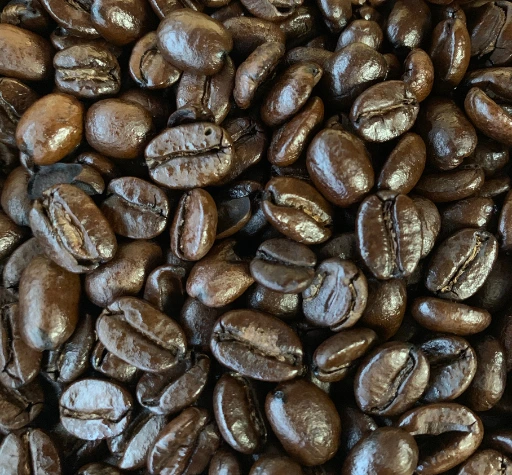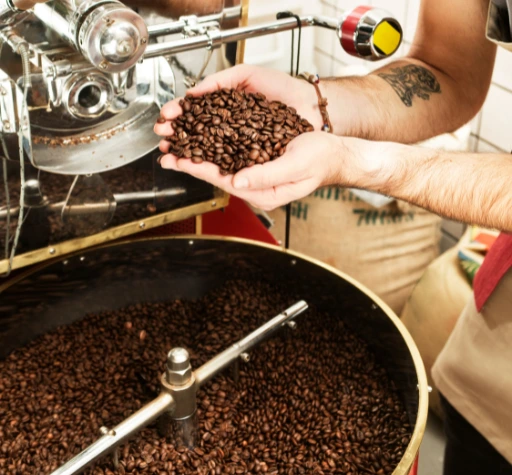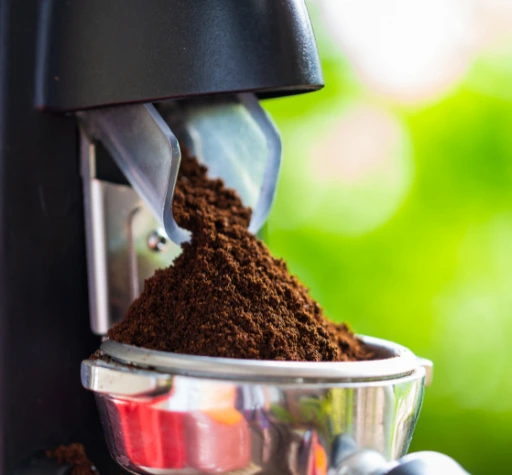Coffee acidity! Some like it, others don’t. Maybe you are among those who are unsure about their preference. Well, you’ve come to the right place.
So, is coffee acidic? First of all, I want to give you a bit of background on what acidity is all about. Trust me, it’ll help you understand the topic better! Afterwards, I’ll answer your question and let you in on so much more about the acidity in coffee.
What Does Acidity in Coffee Mean?
Acidity generally means the level of acid present in a substance. For instance, when a solution has stronger acids, you could say it contains higher levels of acidity. But if you want to be more precise with your description, then you will have to use a PH scale. It quantifies the acidity or basicity of a solution.
Acidic solutions often have a PH value lower than seven on the scale, which runs from zero to fourteen. I’ll explain this a bit more.

Stronger acids like hydrochloric, nitric, or sulfuric can have a value of between 0 and 3, depending on the concentration. Weak acids, on the other hand, generally fall between 4 to 6 on the scale. Most acidic foods and drinks actually belong to this category.
7 is reserved for solutions that are neither acidic nor alkaline. Pure water is a perfect example. Alkalinity increases as you move up the scale.
Let’s now answer the big question.
Is Coffee Acidic?
The answer is YES! In fact, coffee has more than one acid. I know this might sound scary but don’t panic. The acids actually do more good than harm.
In a research done in 2018, both cold and hot coffees registered a PH of between 4.85 to 5.13. [1]. Going by the explanation I gave earlier, we can safely say that coffee has weak acids. And guess what, these acids play a very significant role in your brew as you will find out below.
What Acids Are Present In Coffee?
Coffee contains very many acids, but the major ones, in order of concentration from the highest to the lowest, include:
- Chlorogenic
- Quinic
- Citric
- Acetic
- lactic
- Malic
- Phosphoric
- Linoleic
- Palmitic
Chlorogenic acid takes the bigger share (7%) [2]. It supplies much of the bitterness we perceive as acidity. Plus, it has antioxidant effects that could help lower your blood pressure and reduce weight[3].
As the beans are roasted, the chlorogenic acid degrades into quinic and caffeic acids. This brings a change in taste and flavor. Lighter roasts will have sweet, fruitier flavors while darker roasts like the French roast will yield a sour taste and rich, bold flavors.

Quinic acid has unfortunately been linked to stomach upsets and related complications. And since dark roast coffee contains plenty of it, that’s the first thing you should eliminate if coffee brings you abdominal pain.
Phosphoric and malic acids contribute to the sweetness in your brew while citric acid and acetic acids produce a sharp sour taste to balance the flavor. The rest of the acids, including malic, linoleic, and palmitic acids, add fruity flavors to your drink.
Overall, the sweet, sharp, fruity taste in your coffee is a result of the acids. Without them, the flavor would be dull.
Factors That Affect The Acidity Of Coffee
Roasting, brewing, and grinding are the key factors that affect the level of acidity in coffee. I’ll break down each of these processes to help you understand this better.
Roasting
Roasting alters the acidity of coffee by degrading certain acids while creating others. One example is the conversion of chlorogenic acid into quinic and caffeic acids.

Given how delicate this process is, you shouldn’t try it if you lack skill and experience. The heat and airflow have to be manipulated skillfully to avoid instances where you have too much quinic acid. In addition to causing stomach upsets, it can also make your brew overly bitter.
Learn more about the bitterness of your coffee with our article on Why Is My Coffee Bitter?
Overall, lighter roasts tend to have more acidity than darker roasts, and this causes the brews made by both beans to taste differently.
Brewing
Earlier on I mentioned that both hot and cold coffees registered a PH of between 4.85 to 5.13. Well, the small difference boils down to the brewing method and time.

Researchers at Thomas Jefferson University did a study on both brews and found out that cold brew coffee had much less acidity than hot coffee. [4] This was irrespective of the roast level.
Brewing time does influence coffee acidity as well. The longer you brew your coffee, the less acidic it will be. A shorter brewing time should therefore result in a more acidic beverage.
Want to know how to brew your coffee longer? Check out our guide on How to Use a French Press
Grind size
Acid concentration in coffee also depends on grind size. A useful rule of thumb to remember is that finer grinds have a higher extraction rate than coarse grinds.
Normally, when extraction begins, the first thing to come out will be the acids. Assuming your brew time is short, a coarse grind will yield a more acidic drink than a finer grind.

So, the conclusion here is that you should go for a coarser grind if you want more acids in your cup of joe or a finer grind if the goal is to make your coffee less acidic.
Other factors known to affect coffee acidity include:
Coffee Origin
The soil in regions where coffee grows isn’t the same. Even the soil PH differs as well. Beans from Kenya, for instance, have more malic acids while Colombian beans pack generous amounts of citric acids.
Coffee Type
Both Robusta and Arabica coffee beans have acids but the levels aren’t the same. The acidity in Robusta is just a fraction of what Arabica has. Some varieties of Robusta lack phosphoric and citric acids.
That’s why this type of coffee generally tends to have a bold, harsh, and bitter taste. Even though both dominate the coffee market, Arabica attracts more love and popularity because it has a smoother, sweeter taste.
How To Reduce Coffee Acidity
By now, you should have a clue of how one can reduce coffee acidity. This is only relevant to those with acid reflux or who for one reason or another can’t enjoy a highly acidic beverage. Simply do the following:
- Use Robusta coffee beans or coffee varieties that have considerably low acidity
- Go for darker roasts
- Use a proper coffee grind size for your chosen brewing method to avoid under-extraction which causes coffee to be more acidic
- Increase the brewing time by opting for methods such as the use of a French press
- Add milk to balance the PH level
- Put a dash of salt into your coffee before brewing to reduce acidity
- Brew your coffee cold
Cold brew is a great coffee drink with low acidity that can be enjoyed all year long, learn how to brew this simple coffee with our guide on How to make Cold Brew in a French Press
Possible Health Effects Of Coffee Acidity
If you consume acidic drinks and foods and none of them present problems to your health, then you have no reason to worry about coffee acidity.
Not many of us actually know that undiluted orange juice has a PH of 3 while tomato juice is a solid 4. You have probably had both without your body raising an alarm. That should be enough of a reason for you to continue fueling your caffeine addiction.

However, anyone with acid reflux or other stomach sensitivities such as irritable bowel syndrome or ulcers should avoid coffee [5]. Just to be clear, drinks and foods with acids won’t cause these conditions, but they may aggravate them and make your life difficult.
A better solution would be to speak to a health professional to find out if you can drink less acidic coffee or not consume anything acidic at all.
Is Coffee Acidic? The Final Word!
Generally speaking, there’s no need to be frightened by the idea of acids in coffee as they not only enhance the taste and flavor of your brew but also provide health benefits such as reducing your weight and blood pressure.
It’s unfortunate if you have acid reflux or other stomach sensitivities because the same acids could aggravate your condition. Talk to a health professional if you need advice on how to go about this.
Our hope is that this guide has cleared your doubts about coffee acidity. I have answered a few more questions below to make you much more informed about this subject.
Frequently Asked Questions
Is Low Acidic Coffee Healthier?
As long as regular coffee doesn’t bring you health complications, you have no reason to switch to lower-acidic varieties. But if you find yourself dealing with stomach complications every time you drink coffee, then maybe you should consider the switch.
Which Is More Acidic, Coffee or Soda?
Most sodas have a PH of between 2.5 and 3.5 while coffees fall between 4.85 and 5.13. Based on these findings, it’s obvious that soda is more acidic than coffee. That said, the two actually share some acids such as citric and phosphoric acids, both of which give them their distinct flavors.



















2 comments